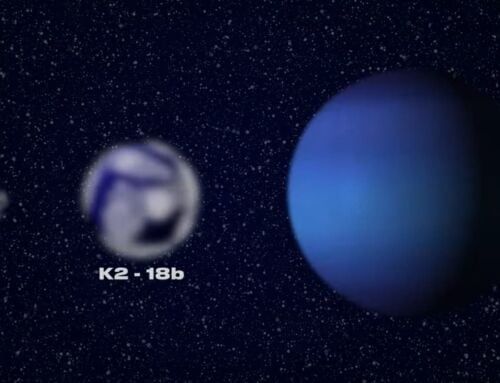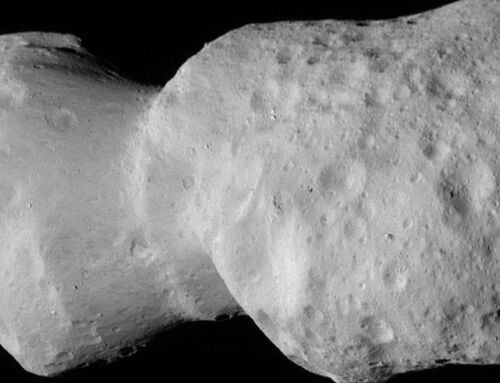New research shows that oceans on super-Earths, planets with two to four times the mass of Earth, once established, can last for billions of years.
Above: This artist’s depiction shows a gas giant planet rising over the horizon of an alien waterworld. Credit David A. Aguilar (CfA)
A new study from astronomers of the Harvard-Smithsonian Center for Astrophysics (CfA), indicates that oceans on super-Earths, once established, can last for billions of years.
Lead author Laura Schaefer of the CfA, said:
“When people consider whether a planet is in the habitable zone, they think about its distance from the star and its temperature. However, they should also think about oceans, and look at super-Earths to find a good sailing or surfing destination.”
Our planet is mostly rock and iron; only about a tenth of a percent is water. Even though water covers 70 percent of Earth’s surface, it makes up a very small fraction of the planet’s overall bulk.
Study co-author Dimitar Sasselov (CfA), explains:
“Earth’s oceans are a very thin film, like fog on a bathroom mirror.”
Schaefer said that planets two to four times the mass of Earth “are even better at establishing and maintaining oceans than our Earth. The oceans of super-Earths would persist for at least 10 billion years (unless boiled away by an evolving red giant star).
This suggests that if you want to look for life, you should look at older super-Earths.”
via earthsky
source cfa.harvard.edu






Leave A Comment